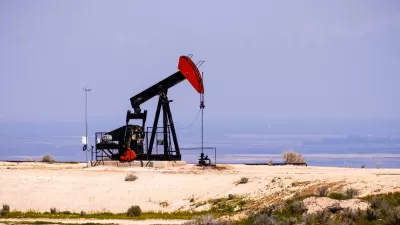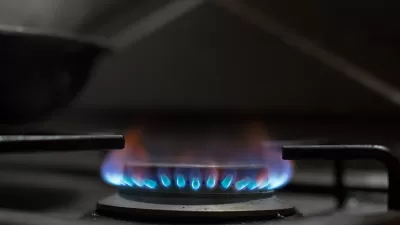Japan is looking to unleash a new source of natural gas in the same way that fracking and horizontal drilling has revolutionized natural gas drilling in the U.S. It's called methane hydrate or 'flammable ice', and is the most prevalent energy source.
Hiroko Tabuchi reports on the 'breakthrough' made by Japanese scientists on March 12 when they "extracted gas from offshore deposits of methane hydrate - thought to be a first". The potential for Japan is huge, especially as it seeks to replace the closed nuclear power plants as a result of the Fukushima earthquake two years ago. The nation is the world's largest importer of liquefied natural gas (LNG).
Brad Plumer of The Washington Post Wonkblog also writes on the breakthrough and provides several excellent graphics for the reader.
What are methane hydrates? Methane hydrates are essentially cage-like lattices of water molecules that contain methane, the chief ingredient in natural gas. They can be found either beneath the seafloor or underneath Arctic permafrost.
He also notes that the "United States is currently funding 14 different research projects into the energy source". In fact, an earlier breakthrough was announced on May 2, 2012 by U.S. Energy Secretary Steven Chu of "the completion of a successful, unprecedented test of technology in the North Slope of Alaska that was able to safely extract a steady flow of natural gas from methane hydrates."
Tabuchi writes how prevalent this source of natural gas is - the trick is how to safely and economically extract if from the sea - or onshore.
Experts estimate that the carbon found in gas hydrates worldwide totals at least twice the amount of carbon in all of the earth’s other fossil fuels, making it a potential game-changer for energy-poor countries like Japan. Researchers had already successfully extracted gas from onshore methane hydrate reservoirs, but not from beneath the seabed, where much of the world’s deposits are thought to lie.
In fact, there is speculation that methane hydrate may be partially responsible for the April 20, 2010 Deepwater Horizon explosion, writes David Sassoon for the Guardian Environment Network.
The vast deepwater methane hydrate deposits of the Gulf of Mexico are an open secret in big energy circles. They represent the most tantalizing new frontier of unconventional energy — a potential source of hydrocarbon fuel thought to be twice as large as all the petroleum deposits ever known.
Survivors of the BP rig explosion told interviewers that right before the April 20 blast,.... a quickly expanding bubble of methane gas shot up the drill column before exploding on the platform on the ocean's surface.
But what of the effect on climate change if natural gas can be safely extracted from methane hydrate? Tabuchi writes:
It is unclear how much the tapping of methane hydrate would affect Japan’s emissions or global warming. On one hand, natural gas would provide a cleaner alternative to coal, which still provides Japan with a fifth of its primary energy needs. But new energy sources could also prompt Japan to slow its development of renewable energies or green technologies, hurting its emissions in the long run. Any accidental release of large amounts of methane during the extraction process would also be harmful.
According to the BBC World News, which also reported on the breakthrough, "Offshore (methane hydrate) deposits present a potentially enormous source of methane but also some environmental concern, because the underwater geology containing them is unstable in many places."
FULL STORY: The New York Times: An Energy Coup for Japan: ‘Flammable Ice’

Maui's Vacation Rental Debate Turns Ugly
Verbal attacks, misinformation campaigns and fistfights plague a high-stakes debate to convert thousands of vacation rentals into long-term housing.

Planetizen Federal Action Tracker
A weekly monitor of how Trump’s orders and actions are impacting planners and planning in America.

In Urban Planning, AI Prompting Could be the New Design Thinking
Creativity has long been key to great urban design. What if we see AI as our new creative partner?

King County Supportive Housing Program Offers Hope for Unhoused Residents
The county is taking a ‘Housing First’ approach that prioritizes getting people into housing, then offering wraparound supportive services.

Researchers Use AI to Get Clearer Picture of US Housing
Analysts are using artificial intelligence to supercharge their research by allowing them to comb through data faster. Though these AI tools can be error prone, they save time and housing researchers are optimistic about the future.

Making Shared Micromobility More Inclusive
Cities and shared mobility system operators can do more to include people with disabilities in planning and operations, per a new report.
Urban Design for Planners 1: Software Tools
This six-course series explores essential urban design concepts using open source software and equips planners with the tools they need to participate fully in the urban design process.
Planning for Universal Design
Learn the tools for implementing Universal Design in planning regulations.
planning NEXT
Appalachian Highlands Housing Partners
Mpact (founded as Rail~Volution)
City of Camden Redevelopment Agency
City of Astoria
City of Portland
City of Laramie





























